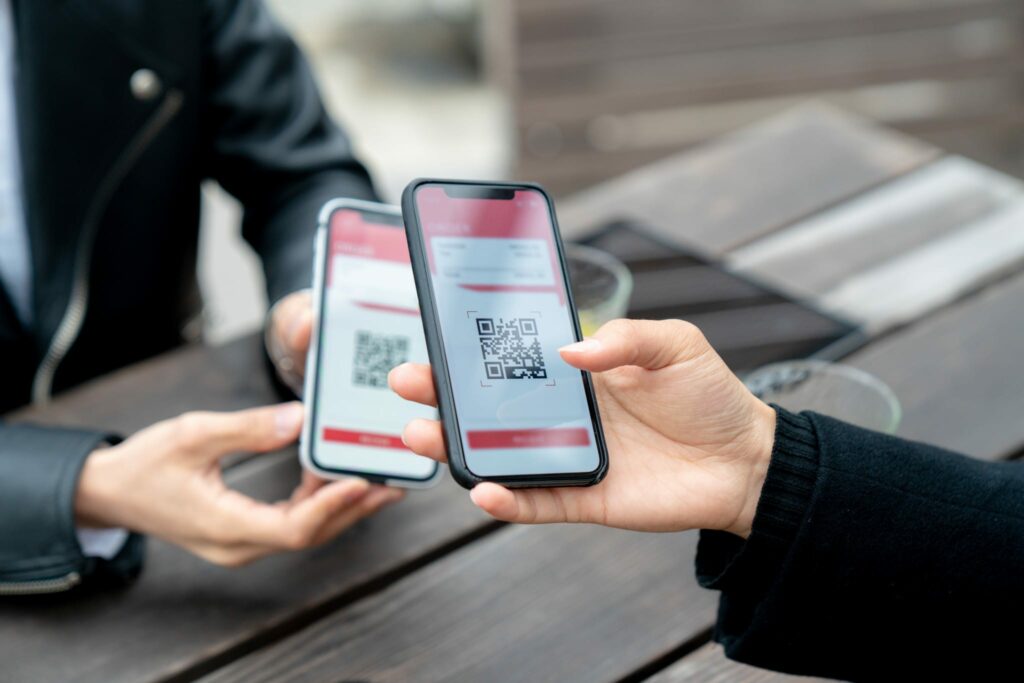There’s no shortage of reasons IT departments need an IT asset management system. After all, IT professionals are often tasked with tracking every little thing—from laptop to smartphone to software licenses to HDMI cables—that their team needs to do their jobs well.
Tracking IT assets across your organization is complex, particularly if you have multiple offices and locations. Most likely, your IT asset management system will include both hardware asset management and software asset management. From printer ink to Photoshop licenses, your team needs to track each and every access across the organization for its entire life cycle.
Having a dedicated IT asset management system is an industry best practice. In this article, we’ll cover 10 reasons how and why your department can benefit from IT asset tracking software and how it can be used to drive efficiencies across your company.
1. Catalog all your IT assets
Laptops, desktops, tablets. Smartphones, digital cameras, scanners. Cords, cables, and docking stations. Hardware and software. If there’s one thing IT departments have, it’s assets. That’s why many IT departments use an exhaustive inventory list to keep track of every little asset they’re responsible for.
An inventory list is a comprehensive list of what your company owns (hardware and software). A good inventory list includes key details such as the manufacturer, value, condition, serial number, warranty expiration date, and more. That means you’ll track more than just where a laptop is—you’ll also track it’s value over time, who has used it, and when it needs to be serviced.
Surprisingly, many companies still rely on handwritten or spreadsheet inventory lists to manage their IT assets. Here are a few drawbacks of those systems.
IT assets listed on paper
Handwritten inventory lists are extremely tedious to manage, can easily be lost or damaged, and just aren’t sustainable. If your IT department stocks more than a handful of things or needs to track assets across multiple locations, you’ll outgrow this method quickly.
If your company has more than a couple of dozen assets, you’re almost certainly too big a business to be tracking assets on a sheet of paper. IT asset management software is the most sustainable solution; as your business continues to scale, your asset tracking system can grow with you.
IT assets listed on spreadsheets
While maintaining an inventory list on a spreadsheet may offer benefits over a handwritten list, it’s still not an ideal method to track all your assets. Inventory spreadsheets are prone to human error, even if you’re using a cloud-based spreadsheet. You risk accidentally deleting data, improperly entering data, and using outdated versions to make updates to—resulting in inaccuracies and even lost revenue. And when items have similar names or long serial numbers, these mistakes become more and more likely.
To accurately understand the status of your business’s IT assets, you’ll need to leverage an asset tracking software or app.
IT assets tracked by a software
IT asset management software is the ideal solution for tracking your IT assets. The right IT asset management software can help you track every last detail that matters to you—and allows you to customize it specifically for your unique business. Plus, you can add images, attachments, notes, QR codes, barcodes, and more—all of which are virtually impossible using paper or a spreadsheet.
One of the benefits of Sortly’s IT asset management software is that your software and hardware asset lists are displayed on your dashboard. The dashboard is searchable, easy to update, easy to export, and securely synced to the cloud. Thanks to powerful automation features, this asset list will save you time and stress.
2. Easily track your assets’ value and condition

Now that you know why tracking your assets on an inventory list is so important, let’s touch on two of the critical details you can track on that list: those assets’ value and condition. Almost every IT department needs to track value and condition through the asset lifecycle.
Related: Assets vs. Inventory: What’s the difference?
An asset’s value reflects how much that asset is worth at any given time. Unfortunately, that doesn’t always mean the price you paid for it—although you can track that on an app like Sortly, too.
An asset’s condition reflects, well, how you would describe the item if you were listing it for sale. If you were evaluating a laptop’s condition, for example, you would consider the laptop’s appearance, how well it worked, and so on. Then, you’d give it a rating, like perfect, fair, or poor.
A genuine financial inventory incorporates IT assets across every location. And while that’s neither simple nor easy, the right software can really help. Plus, knowing the value and condition of your assets throughout the asset lifecycle is essential for a variety of super-important inventory tasks, like:
- Determining inventory valuation (for all business units within the organization)
- Updating balance sheets
- Performing inventory audits across the business units (or even just one location)
- Preparing tax documents
- Figuring out the total cost of ownership (hardware & software)
If you’ve got information about how much your assets are worth and what condition they’re in at your fingertips, you can save your company time and money. You’ll also be able to speed up tedious inventory audits. And when it comes time to prepare for tax filings, you’ll always have up-to-date information about what you’ve got, where it’s at, and what it’s worth.
3. Use barcodes and QR codes for easy asset management

We briefly mentioned that the right automation features could save you tons of time and stress—and there’s no better example of that than barcode and QR codes. Barcodes and QR codes are a crucial part of efficient, errorless IT asset management.
IT asset management apps like Sortly allow you to connect the information about your assets with their corresponding barcoded or QR codes. And, since you can use your smartphone or tablet as a barcode or QR code scanner, this can save you an enormous amount of time.
In the Sortly app, you can use your phone (or a Bluetooth scanner, if you prefer) to check items in and out. When you scan an item, you’ll instantly pull up that item’s information. From there, you can drag it to a new folder, update information about where it’s going, quickly check its value or more.
Related: How do I barcode my inventory?
4. Bundle assets for easy hardware asset management
When your IT department needs to lend assets to an employee, client, or customer, it may more than just a single item— it may be a set of things, or “bundle.” In fact, many IT departments frequently bundle a handful of items together. For example, a new employee could receive a suite of IT assets on their first day: a laptop, a docking station, two monitors, a wireless keyboard and mouse, a printer, and more.
Chances are, each of these items has its own name and place in your inventory list. But, since you so often send these items together, you’ll want an IT asset management system that allows you to bundle all this stuff into one item. By bundling inventory items that are stored, moved, and collected together, you can save your department tons of time and stress.
When you send out the whole bundle to that new hire, you can simply scan the barcode or QR code once, move the bundle to the “out” folder—or whatever system works for you—and be assured that those items are accounted for.
5. Create custom barcodes and QR codes using IT asset management software
IT asset management software like Sortly makes it easy to create customized barcodes and QR codes for all your unlabeled (or bundled) stock.
When you add an item or view it in your inventory, you’ll have the opportunity to create a customized barcode or QR code right in the Sortly app. Once you do, you can print it on a label (using standard label paper from manufacturers like Avery).
You’ll also be able to customize labels. You can select its shape, size, what information appears on it, and even add your company’s logo. The customized barcode or QR code will be featured prominently, so you and the rest of your team can easily scan the item in or out.
6. Get your whole IT department working together

One of the main problems with pen-and-paper or spreadsheet asset management is that it’s so hard to collaborate using these asset management systems. Fortunately, the best IT asset management software is designed for teams. In an asset tracking app like Sortly, your employees can work together to track and manage your IT assets. Simply create an account for each user, log them in on their phone, tablet, or computer, and they’re ready to track assets, too.
Best of all, you can decide how much access each employee has, and to what. Maybe you have an administrator on your team who simply needs read-only access. Or perhaps you’ve got a few people who need full permissions to do everything on an administrative level. Or maybe you’re even sharing this information with other organizations. Regardless, you can customize permissions in Sortly to control who can see and do what.
Related:The Importance of Tracking Assets
7. Create a history of where every asset’s been
Another benefit of using asset management software to track your IT assets is item history. You’ll have a detailed digital trail of changes to each and every asset you manage. That means that you’ll know who last had an asset, when, where, and what condition it was in when it was checked in and out.
Item histories are super helpful in preventing inventory loss and understanding how assets move through your business. It can also help you understand trends in asset usage, which can help you make better decisions about purchases in the future.
Another great benefit of item histories: understanding damage. When you’re lending out hundreds of thousands of dollars of assets every year, it’s important to have a clear understanding of how and why inventory breaks. Differentiating normal wear-and-tear from a break can help your business understand what’s expected—and what was just a catastrophic coffee spill.
And item histories can be helpful when your business needs to keep an eye on software licenses, too. With tools that help you investigate asset history, you’ll always be able to figure out who (or what devices) are using a software license at any given time.
8. Create reports for details on all the assets you manage
One significant benefit to creating an IT asset management system that’s totally digital? Robust, easy-to-use reporting. With the right asset management software, everybody on your team can get the information they need about every asset within the company.
For example, if the service desk needs to remind everybody who’s using certain software to run a system update, they can efficiently run a report to see who’s using a license at the moment. The same goes for corporate compliance. If the head of the financial department wants to know just how much cash is tied up in hardware at any given moment, a quick report can tell them everything they need to know.
Plus, with an asset tracking app like Sortly, reports are easily customized—and they look great, too. Add photos, critical details, and decide whether you’d like to export them as PDFs or CSVs.
9. Manage expirations and warranties easily

A software license can expire. And a laptop’s warranty always ends at some point. And letting these dates come and go can cause your company time, money, and stress. Luckily, the right IT asset management system offers you completely customizable alerts that notify you as important dates approach—or as inventory or stock dwindles.
You (or the right person) can get notified when:
- an asset is falling out of warranty
- a license is approaching expiration
- inventory of certain hardware assets (like mobile devices or tablets) is running too low
Setting up alerts in notifications in Sortly is simple. All you have to do is head to the asset’s profile and enter the relevant information. When does the asset expire? When does it fall out of warranty? What is the minimum amount of this asset my company needs to have on hand at all times?
You can also decide who’s notified and how. Enter email addresses for the registered users of Sortly, and they’ll get alerts and reminders either by email, in-app notification, or both. You can also customize when and how frequently these alerts and reminders are dispatched.
Sortly for IT asset management
Sortly is modern, intuitive asset management software that makes tracking anything and everything—from docking stations to Microsoft Office licenses—a piece of cake. Businesses of all shapes and sizes turn to Sortly to get organized, for good—at a price that actually makes sense.
The app—which works seamlessly on phones, tablets, and computers—is designed for all types of employees with no training required. That means everyone on your team can get the hang of the asset tracking app in just a few minutes. (But if you need help and support, we’ve got plenty of that for you, too. Webinars, tons of support articles, and a support desk that’s always happy to hear from you.)
Loaded with powerful features and infinitely customizable, Sortly makes it easy to:
- Create a meaningful inventory list jam-packed with important details
- Assign pictures, documents, and more to all inventoried items
- SYnc barcodes and QR codes with inventory items
- Use your phone or tablet to scan items in and out
- Create custom barcodes and QR codes for bundles or unlabeled stock
- Keep up with compliance requests with beautiful, insightful reports
- Set alerts for low stock, expiration, and warranty end dates
- Track assets across multiple locations
- Access your inventory data remotely, at any time
- Save tons of time, money, and stress
- Simply know where all your stuff is
Curious about whether Sortly could be right for your IT department? Why not give it a try today—absolutely free.




